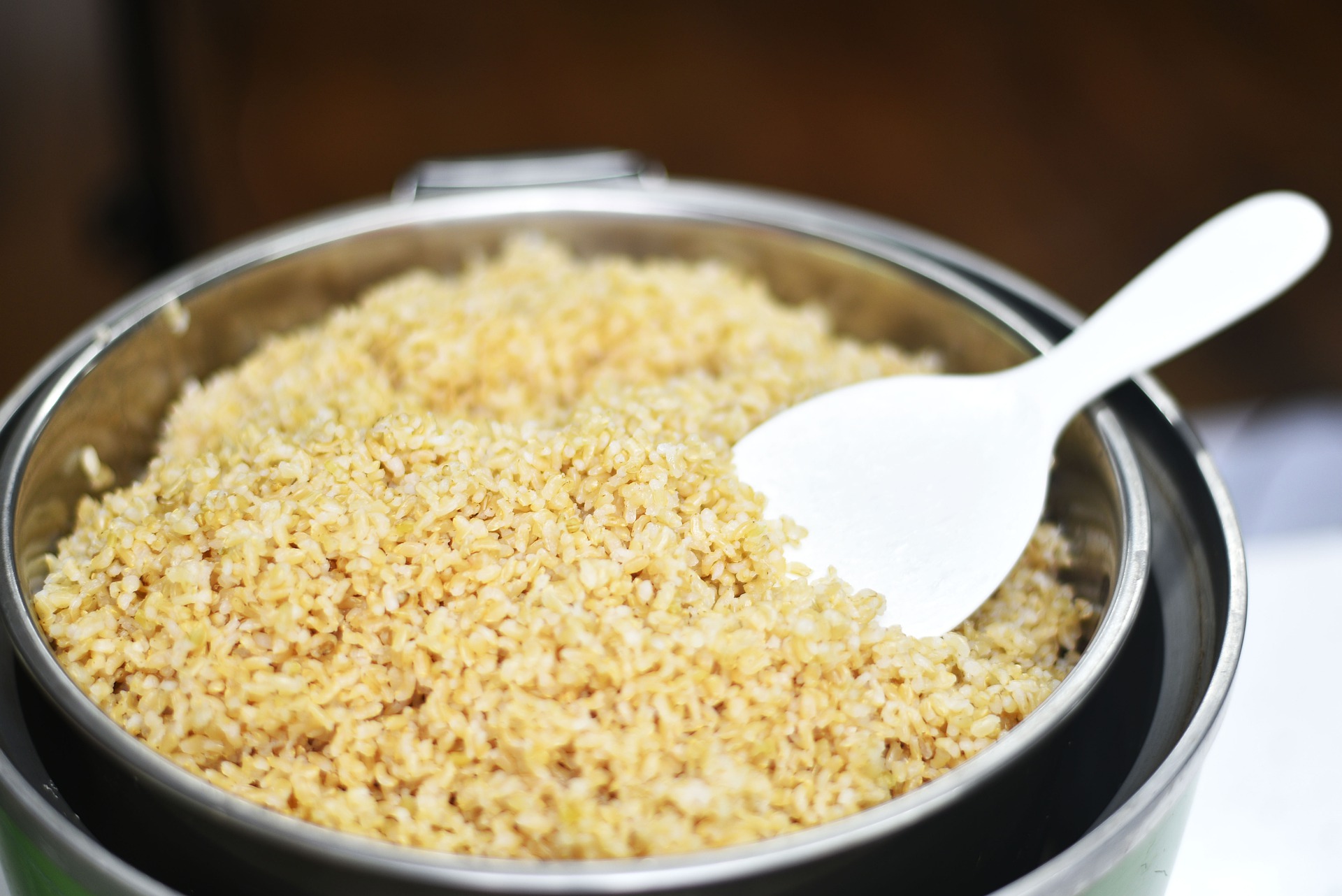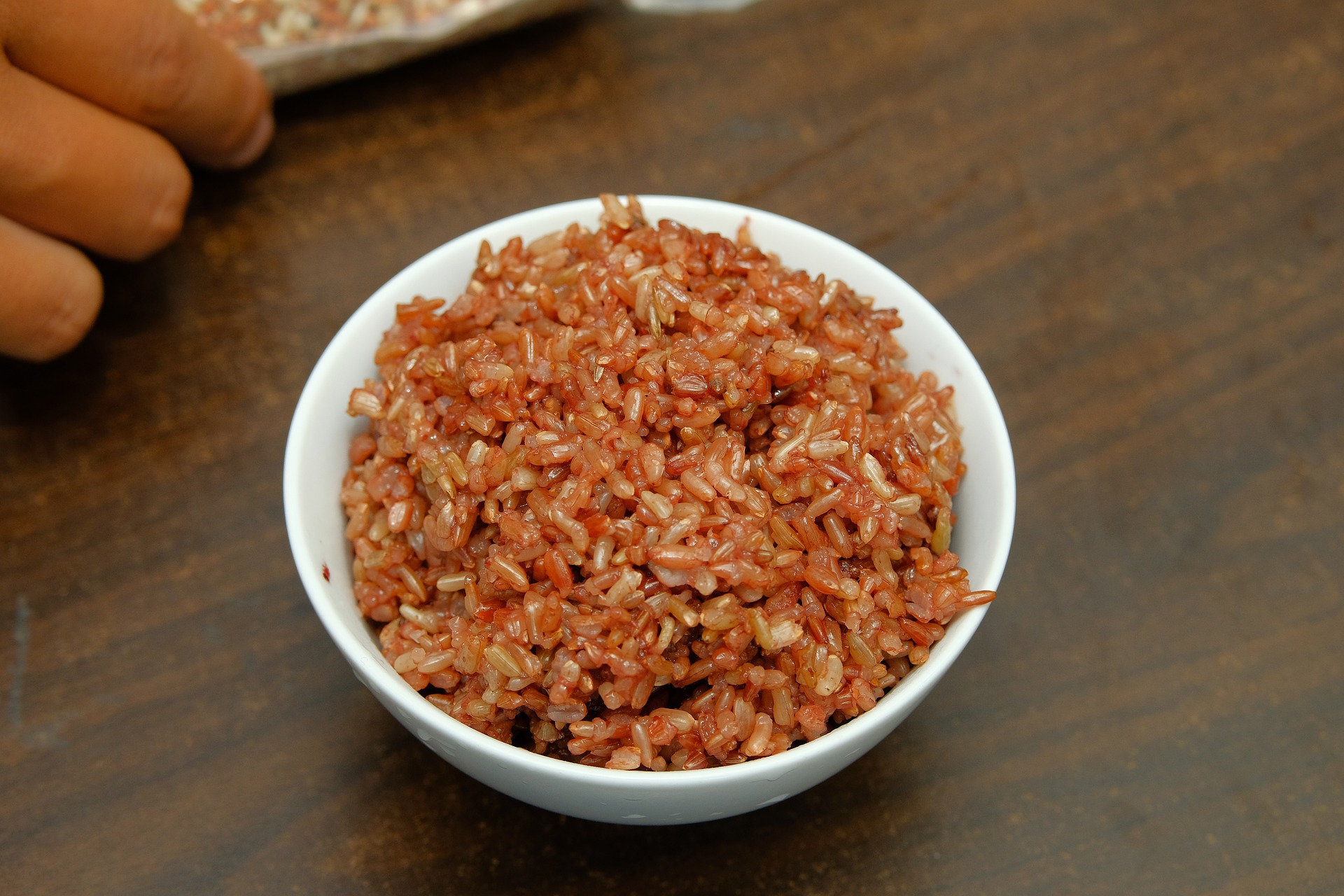Over 3.5 billion people in the world consume rice in their diet.
Most people eat white rice, however, in many societies brown rice has started being incorporated into healthy meal planning, due to its range of useful health benefits. If you are looking for simple ways to get healthier, introducing brown rice to your meals in place of white rice and other ‘stripped’ grains, is a simple, hassle-free method of improving your diet.

Health Benefits

The less manufactured the grain is means the more nutrients available for your body to draw on. Therefore, brown rice is more than just its color; it’s a whole grain and much more interesting (and healthy) than the part that’s processed to make white rice.
The outer layers of a rice grain are composed of two parts, the bran and the germ, which serve as the storage depot for nutrients within the rice grain. The inner layer, the endosperm, is the part of the grain used for white rice. The majority of the useful vitamins and minerals, such as magnesium (which lowers the chance of stroke), are found within the bran and germ.
According to Healthline, “Brown rice contains more nutrients than white rice, and it may also be more favorable for blood sugar levels, heart disease risk, and weight control.” It must be noted that Healthline also states that eating white rice as part of a balanced diet should also be explored, as both forms of the grain can be healthy options.
Incorporating brown rice as a dietary staple may help people who are overweight to shed more pounds, while also helping the heart’s performance. Brown rice contains more dietary fiber than white rice and other grains, helping you feel fuller for longer while taking in fewer calories.
Eating brown rice is positively linked to lowering the risk of diabetes. Brown rice has a low GI (glycemic index), which according to WebMD makes a huge difference; “By eating three servings per day of whole grains like brown rice, you can reduce your risk of developing type 2 diabetes by up to 32%.”
Live Science reports that brown rice also contains healthy antioxidants, compounds that help fight against heart disease and cancer cells known as free radicals. Brown rice is free of gluten, cholesterol, and trans fats, while barely containing any fats or sodium at all. It is hugely beneficial in aiding digestion, strengthening bones, and producing melatonin, which aids in sleep.
One downside associated with brown rice is its comparatively high arsenic content. But this issue is overblown given that the amount of rice consumed to be considered harmful is much too great, and that rice should always be washed before cooking.
Preparing Brown Rice

Because the fibrous bran and germ layers have not been removed, brown rice takes longer to cook than white rice, whether you cook on the stovetop or via a rice cooker.
The simplest way to cook brown rice on the stovetop is as follows:
1. Rinse your rice thoroughly to remove extra starch, then add to a pot with about 1 ½ cups of water for every cup of dry brown rice.
2. Bring the water to a boil.
3. Reduce the heat to low and cover the pot.
4. Simmer the brown rice for 20 minutes before removing it from heat.
5. Sit rice for 5-10 minutes before serving.
If you prefer using a rice cooker (my chosen method), you’ll need to use more water than you would with white rice. A 50/50 rice to water ratio is recommended.
As with all grains, it may take a few attempts to get the right desired consistency, but once you have a process in place it becomes a simple method of creating a healthy meal alternative.
Cooking With Brown Rice

In terms of texture, while white rice can be considered fluffy and as close to tasteless as food can get, brown rice is a much heavier, chewier grain that is markedly nuttier in flavor. As these top 12 Tomatoes Top 10 Rice Dishes suggest, there’s ample scope for you to replace white rice with brown rice in your everyday cooking. Just be aware you are likely to need smaller serving sizes!
Generally speaking, you’ll also find that snacks containing brown rice are healthier than others, just be sure to check the label for any additives and other ingredients.
Conclusion
Cooking with brown rice is a great way of gaining some sure-fire health benefits, from lowering the risk of disease to improving digestion and sleep. Chances are that you already use white rice in your diet, so you can replace it with brown rice and not impact your mealtime.













